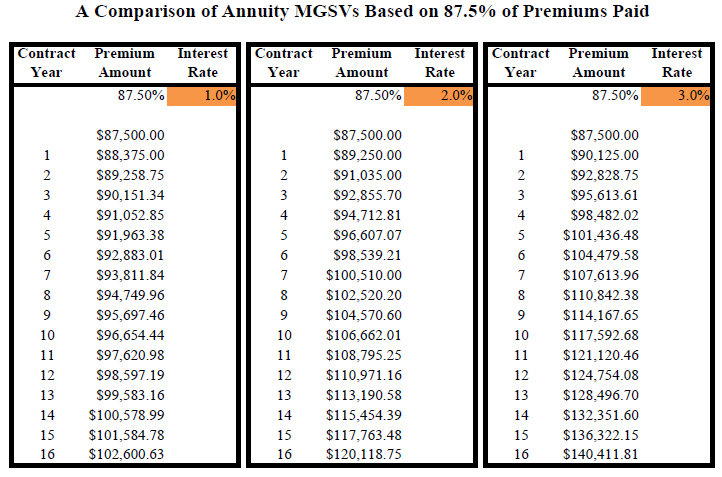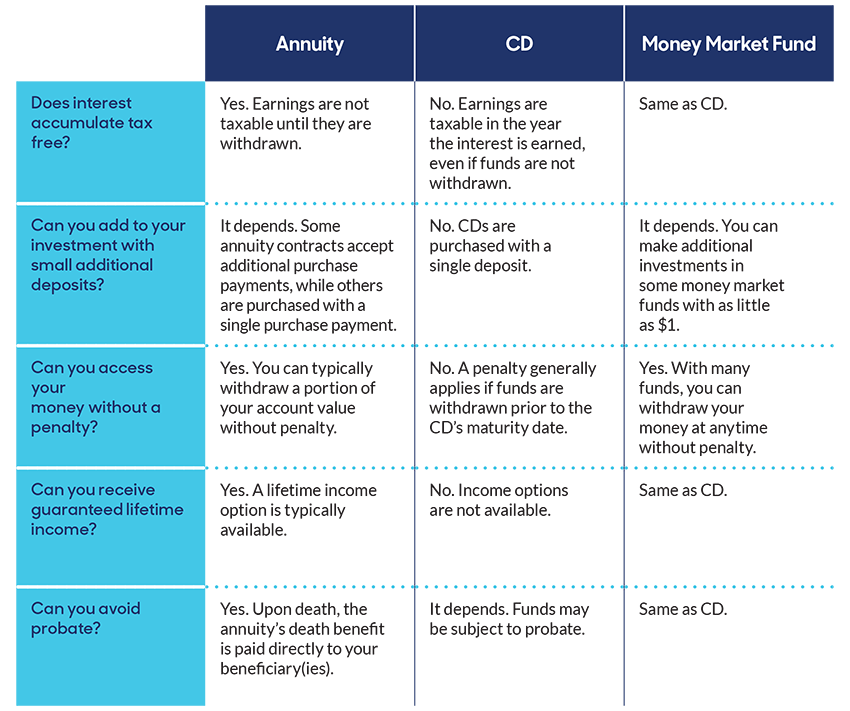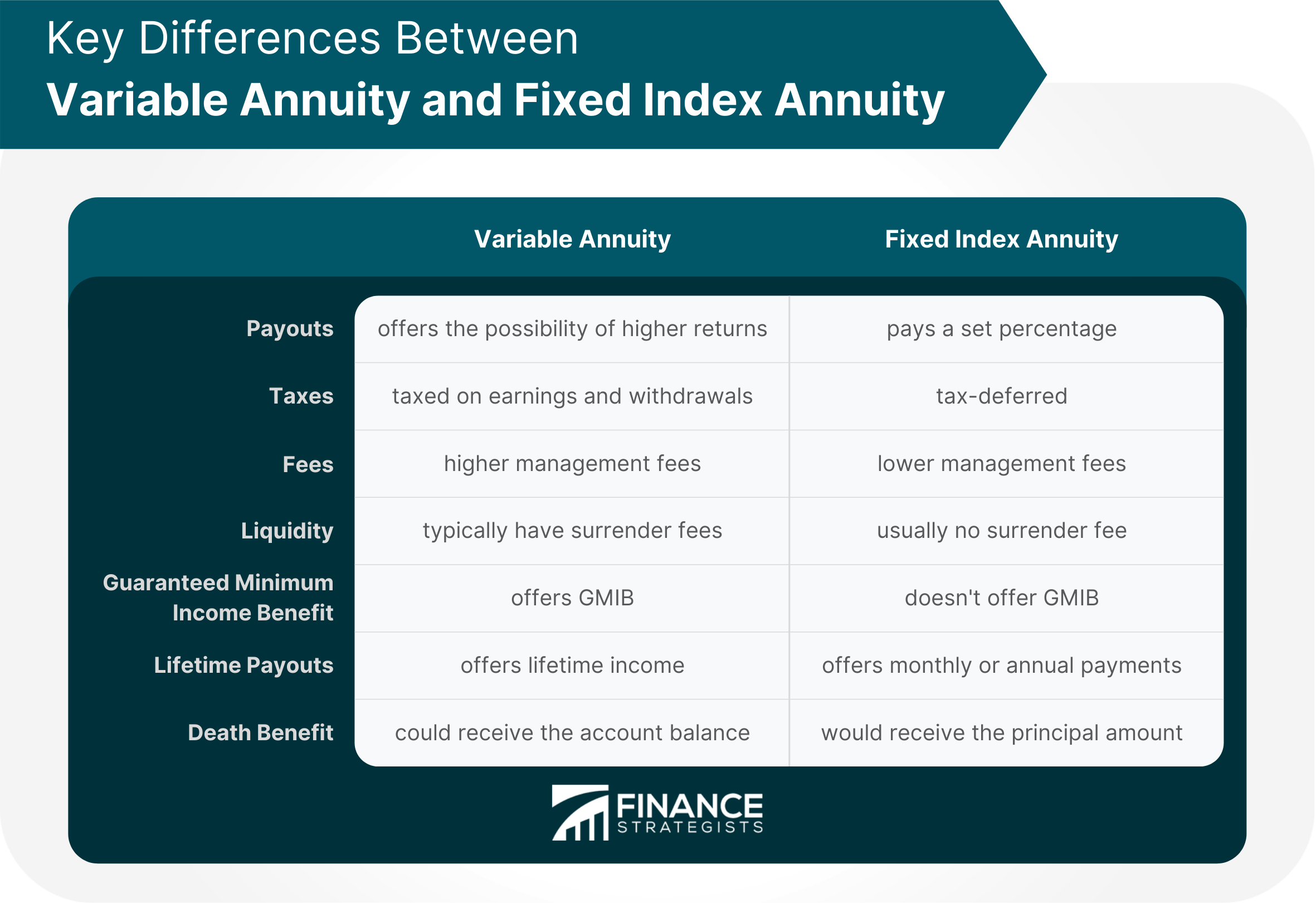All Categories
Featured
Table of Contents
Just as with a fixed annuity, the owner of a variable annuity pays an insurance policy business a round figure or series of payments for the promise of a series of future payments in return. However as mentioned over, while a repaired annuity expands at an ensured, continuous rate, a variable annuity expands at a variable rate that depends upon the efficiency of the underlying financial investments, called sub-accounts.

During the buildup phase, possessions spent in variable annuity sub-accounts grow on a tax-deferred basis and are strained only when the agreement proprietor takes out those earnings from the account. After the buildup phase comes the income stage. Gradually, variable annuity properties should theoretically raise in value until the contract owner chooses she or he would certainly like to begin taking out money from the account.
The most considerable problem that variable annuities normally existing is high cost. Variable annuities have several layers of fees and expenditures that can, in aggregate, produce a drag of up to 3-4% of the contract's worth each year.
Breaking Down What Is Variable Annuity Vs Fixed Annuity A Comprehensive Guide to Investment Choices Breaking Down the Basics of Investment Plans Advantages and Disadvantages of Different Retirement Plans Why Fixed Vs Variable Annuity Pros And Cons Is a Smart Choice How to Compare Different Investment Plans: How It Works Key Differences Between Different Financial Strategies Understanding the Key Features of Long-Term Investments Who Should Consider Strategic Financial Planning? Tips for Choosing the Best Investment Strategy FAQs About Planning Your Financial Future Common Mistakes to Avoid When Choosing a Financial Strategy Financial Planning Simplified: Understanding Fixed Annuity Vs Variable Annuity A Beginner’s Guide to Pros And Cons Of Fixed Annuity And Variable Annuity A Closer Look at How to Build a Retirement Plan
M&E expense charges are computed as a percent of the agreement worth Annuity providers hand down recordkeeping and other administrative expenses to the agreement proprietor. This can be in the form of a flat annual fee or a percentage of the agreement worth. Management fees may be consisted of as part of the M&E threat charge or might be assessed individually.
These costs can vary from 0.1% for passive funds to 1.5% or more for actively managed funds. Annuity agreements can be customized in a number of means to offer the certain requirements of the agreement proprietor. Some usual variable annuity bikers include guaranteed minimal accumulation advantage (GMAB), guaranteed minimum withdrawal benefit (GMWB), and guaranteed minimum revenue advantage (GMIB).

Variable annuity payments give no such tax reduction. Variable annuities tend to be very ineffective cars for passing wealth to the future generation because they do not take pleasure in a cost-basis adjustment when the original contract proprietor dies. When the proprietor of a taxable investment account passes away, the expense bases of the investments held in the account are adapted to mirror the market prices of those investments at the time of the owner's death.
Breaking Down Variable Annuity Vs Fixed Indexed Annuity Key Insights on Your Financial Future Breaking Down the Basics of Fixed Annuity Vs Variable Annuity Features of Fixed Index Annuity Vs Variable Annuities Why What Is Variable Annuity Vs Fixed Annuity Can Impact Your Future How to Compare Different Investment Plans: Simplified Key Differences Between Different Financial Strategies Understanding the Risks of Long-Term Investments Who Should Consider Strategic Financial Planning? Tips for Choosing Variable Vs Fixed Annuities FAQs About Planning Your Financial Future Common Mistakes to Avoid When Planning Your Retirement Financial Planning Simplified: Understanding Your Options A Beginner’s Guide to Smart Investment Decisions A Closer Look at How to Build a Retirement Plan
Such is not the instance with variable annuities. Investments held within a variable annuity do not receive a cost-basis modification when the initial proprietor of the annuity dies.
One significant concern connected to variable annuities is the capacity for conflicts of interest that may exist on the part of annuity salespeople. Unlike an economic consultant, that has a fiduciary task to make financial investment decisions that profit the client, an insurance policy broker has no such fiduciary responsibility. Annuity sales are highly lucrative for the insurance experts who sell them due to high ahead of time sales compensations.

Several variable annuity contracts contain language which puts a cap on the percentage of gain that can be experienced by specific sub-accounts. These caps stop the annuity owner from fully getting involved in a section of gains that can otherwise be enjoyed in years in which markets produce considerable returns. From an outsider's point of view, it would certainly appear that investors are trading a cap on investment returns for the previously mentioned ensured floor on financial investment returns.
As kept in mind over, surrender costs can significantly limit an annuity owner's ability to relocate possessions out of an annuity in the very early years of the agreement. Further, while many variable annuities allow agreement proprietors to withdraw a specified amount during the build-up phase, withdrawals beyond this amount typically lead to a company-imposed charge.
Withdrawals made from a fixed rate of interest financial investment alternative can also experience a "market value change" or MVA. An MVA changes the value of the withdrawal to show any type of changes in rate of interest rates from the time that the cash was bought the fixed-rate option to the time that it was taken out.

Fairly typically, even the salesmen that market them do not totally comprehend just how they function, therefore salesmen occasionally victimize a purchaser's feelings to market variable annuities instead than the qualities and suitability of the items themselves. Our company believe that investors need to totally understand what they own and just how much they are paying to have it.
Analyzing Variable Vs Fixed Annuities A Closer Look at How Retirement Planning Works Breaking Down the Basics of Investment Plans Benefits of Variable Annuities Vs Fixed Annuities Why Choosing the Right Financial Strategy Is a Smart Choice How to Compare Different Investment Plans: Simplified Key Differences Between Different Financial Strategies Understanding the Rewards of Long-Term Investments Who Should Consider Fixed Index Annuity Vs Variable Annuity? Tips for Choosing the Best Investment Strategy FAQs About Fixed Indexed Annuity Vs Market-variable Annuity Common Mistakes to Avoid When Choosing Indexed Annuity Vs Fixed Annuity Financial Planning Simplified: Understanding Variable Annuities Vs Fixed Annuities A Beginner’s Guide to Smart Investment Decisions A Closer Look at How to Build a Retirement Plan
Nevertheless, the exact same can not be claimed for variable annuity possessions held in fixed-rate investments. These assets legally come from the insurance coverage business and would as a result be at risk if the business were to stop working. Any kind of guarantees that the insurance policy business has agreed to supply, such as an assured minimum revenue benefit, would be in concern in the occasion of a service failing.
Possible purchasers of variable annuities ought to recognize and consider the monetary condition of the issuing insurance company prior to getting in into an annuity contract. While the benefits and disadvantages of different kinds of annuities can be questioned, the actual issue bordering annuities is that of suitability. Simply put, the question is: that should own a variable annuity? This concern can be hard to answer, provided the myriad variants offered in the variable annuity world, however there are some fundamental guidelines that can aid capitalists choose whether or not annuities need to contribute in their monetary plans.
As the stating goes: "Buyer beware!" This write-up is prepared by Pekin Hardy Strauss, Inc. Best retirement annuity options. ("Pekin Hardy," dba Pekin Hardy Strauss Wide Range Monitoring) for educational purposes just and is not planned as an offer or solicitation for service. The info and data in this post does not comprise lawful, tax obligation, accounting, investment, or various other expert recommendations
Table of Contents
Latest Posts
Decoding How Investment Plans Work A Comprehensive Guide to Investment Choices Defining Fixed Index Annuity Vs Variable Annuity Benefits of Fixed Annuity Vs Variable Annuity Why Choosing the Right Fin
Analyzing Fixed Vs Variable Annuity Everything You Need to Know About Pros And Cons Of Fixed Annuity And Variable Annuity Breaking Down the Basics of Investment Plans Features of Choosing Between Fixe
Decoding How Investment Plans Work A Comprehensive Guide to Investment Choices Defining Fixed Income Annuity Vs Variable Annuity Pros and Cons of Various Financial Options Why Choosing the Right Finan
More
Latest Posts